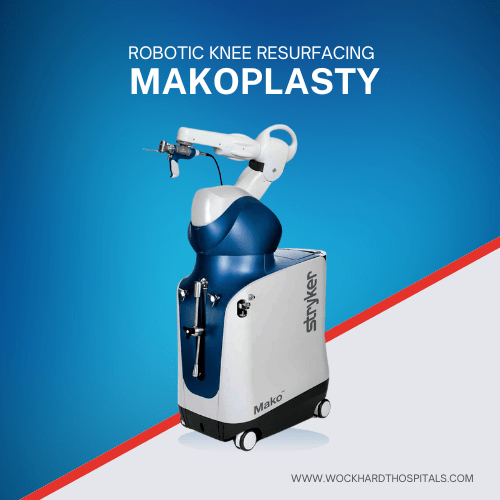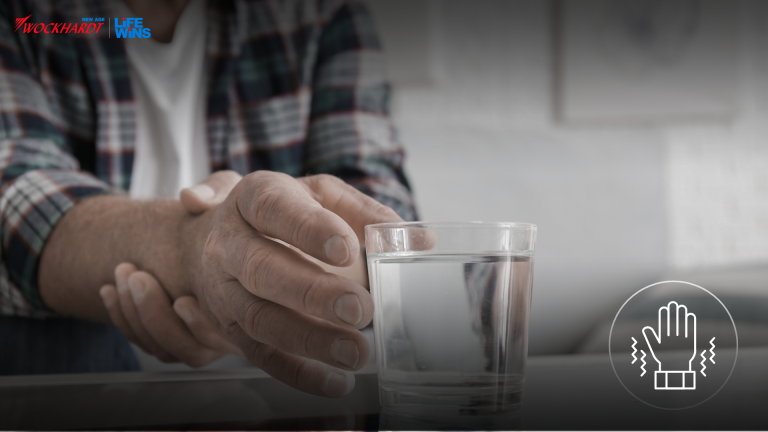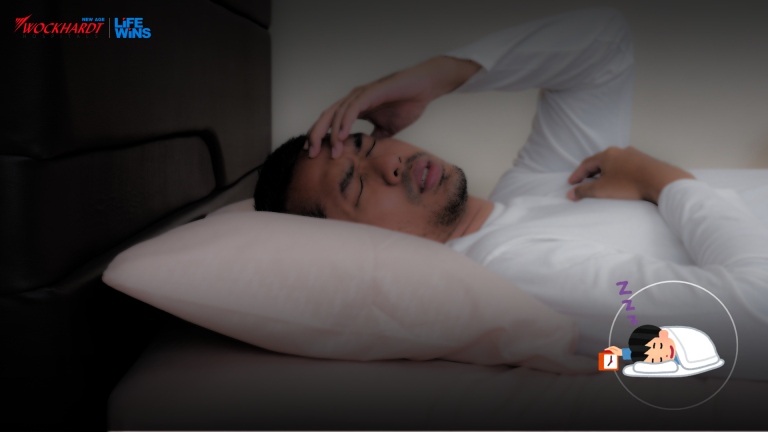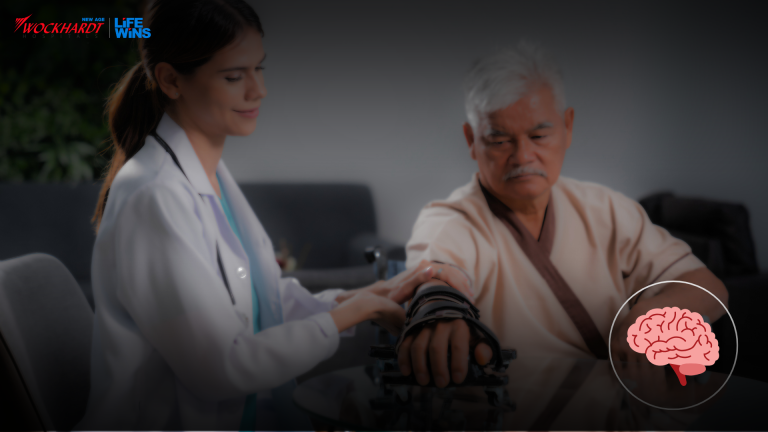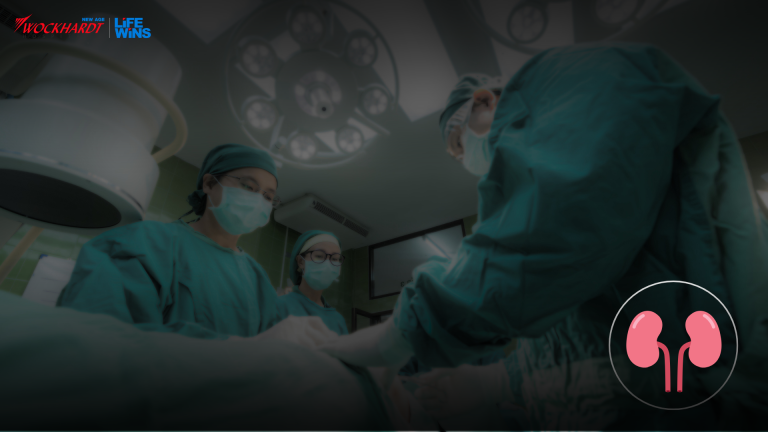World Brain Tumor Day: Wockhardt Hospitals organize an awareness seminar

The 10th leading cause of morbidity in India- Brain Tumor is increasing the number of deaths every year. Although the number of deaths from Brain Tumor in India is increasing, the awareness of the disease remains low. World Brain Tumour Day is observed annually on 8 June. The day is marked to raise awareness and educate people about brain tumors. Wockhardt Hospitals, Nagpur organized an awareness seminar on this day to spread awareness among the people. The seminar conducted by Dr. Rahul Zamad, Consultant- Neuro Surgery, Wockhardt Hospitals was attended by several people. “Brain tumour is an overgrowth of cells in your brain that forms masses called tumours. Cancerous tumours, otherwise called malignant brain tumours can grow very quickly and disrupt the functioning of the brain. Common symptoms of brain tumours include headache, projectile vomiting, change of personality, weakness or numbness of some part of the body, speech difficulty, loss of balance and fits”, informed Dr. Rahul Zamad while speaking at the seminar. “It is estimated that people have around 1% chance of developing brain tumors in their lifetime. The well-established risk factors for developing brain tumors are exposed to ionizing radiation and a family history of brain cancer. After the surgery these patients require rehabilitation which is an important part of the overall treatment”, he added. Mostly, the symptoms and signs of a brain tumour depend on the size and location of the tumour in the body. Some tumours directly affect the brain tissue while some cause pressure on the surrounding brain. As per the National Health Portal (NHP), Government of India, brain tumor cases are rising in India. Among children, it is more common in girls. The overall survival of brain tumor patients has increased over the last couple of decades. Early detection and consulting the doctor can result in early recovery and better outcomes in these patients. As a result, it is important to not ignore early signs and symptoms and seek medical help in time. Source: https://thelivenagpur.com/2021/06/09/world-brain-tumor-day-wockhardt-hospitals-organize-an-awareness-seminar/
55 years old Ratmala Upadhyay with an HRCT score of 25, defeated Corona Thanks to the efforts of doctors at Wockhardt
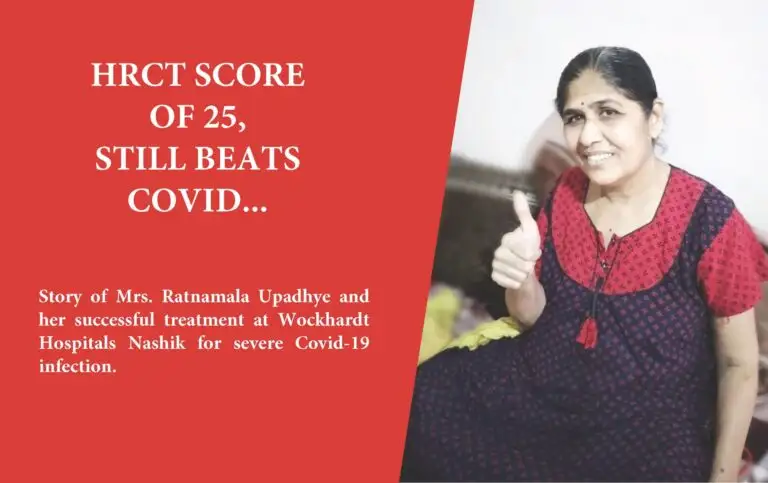
On April 19, 2021, when the single day count of Covid patients in Nashik District reached to a high of 6800 and there was a shortage of Covid beds everywhere, 55 year old Mrs. Ratmala Upadhyay got admitted to a hospital in Satpur area of the city, her score of HRCT scan was 2. She was treated there for 8 days but her condition showed no sign of any improvement, as a result of which on April 27 her family decided to admit her to a higher centre. They had heard of Wockhardt Hospitals, which is well-known for treating critically ill patients, so family members brought her to Wockhardt Hospitals. Doctors were wondering how to admit a new patient for treatment when there was not even a single bed available. When Mrs. Ratmala came to Wockhardt Hospitals, her condition was very bad, she was bothered by constant coughing, she had difficulty in breathing, her blood pressure was high, her blood oxygen level was 88%, she needed 15 liters of oxygen a day and her situation so deteriorated that she would have collapsed anytime; Renowned Physician Dr. Rahul Baste said who treated her. She was urgently needed to be admitted to the Covid ICU but with no beds available, the big challenge for the hospital administration was how to treat this patient. As it was important to save her life, the Medical Administration Department under the guidance of Dr. Nilesh Gumardar made their best efforts to make a bed available for Mrs. Ratnamala, and somehow she was admitted. Dr. Rahul Baste goes on to say; Preliminary tests revealed that her HRCT score was 25, which means that 100% of her lungs were infected with the virus. It was difficult for her to maintain blood oxygen levels, so she was immediately placed on a non-invasive ventilator and given supportive medication so that her blood oxygen level to rise. She was also given plasma and immunoglobulin therapy, he said. Critical Care Team’s efforts were successful and Mrs. Ratnamala responded well to the treatment, as a result of which her cough subsided, she started breathing properly, her oxygen level rose to 98% and she also started taking her meals properly. Her condition improved significantly and she was happily discharged from the hospital. About this great feat, Mrs. Ratnamala’s family thanked Dr. Rahul Baste, Medical Administration, Intensivist Doctor in ICU, Nurses, Technicians, and Housekeeping staff. Humanity is alive!Despite the shortage of oxygen supply and the unavailability of beds, Wockhardt Hospitals admitted my mother for her serious health condition. Proper treatment at the right time saved her life and today my mother is going home happy. At Wockhardt, we got adoring help that was not expected anywhere else. On behalf of our entire family, I sincerely thank all the doctors and staff here.– Amol Upadhye (Son of Mrs. Ratnamala) Best quality healthcare, always…Wockhardt Hospitals, which has been providing quality healthcare to patients in North Maharashtra for more than a decade, has saved many lives. With the help of experienced specialist doctors, well-equipped ICU, Operation Theater, experienced nurses, and paramedical staff, it has earned a reputation among the patients as the Best Multispecialty Hospital in North Maharashtra. Even during the pandemic, the intense work of maintaining this quality of healthcare is being carried out continuously by giving proper treatment to the patients and making them free from Covid. For this achievement, I would like to thank Dr. Rakesh Borse, Dr. Priyanvada Malpani, and Dr. Prashant Ubhale in the critical care team for their efforts. With this Wockhardt Hospitals Nashik always strives to provide immediate and appropriate treatment to every patient who reaches the hospital in critical condition.– Dr. Sandeep Patel (Head of Center – Wockhardt Hospitals Nashik)
What is bilateral pleural effusion? Know about its symptoms, causes, treatment
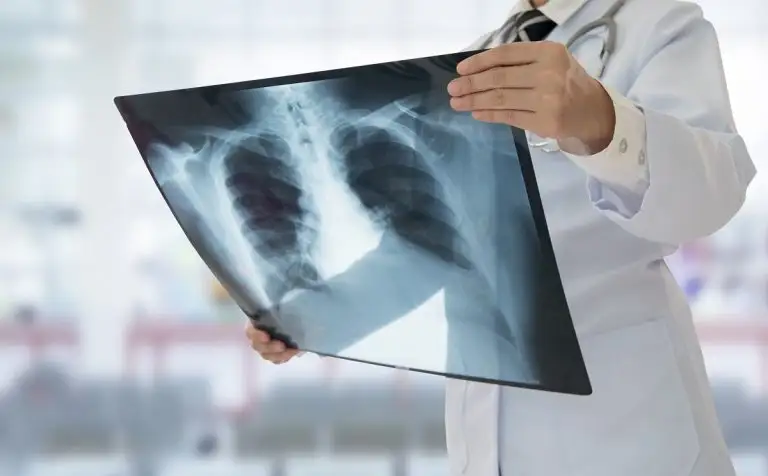
Bilateral pleural effusion is an abnormal accumulation of fluid in the pleural space — the space between the lungs and the chest wall, said doctors Reports of veteran actor Dilip Kumar’s health have been making news, and according to the latest update given by his family and his doctor Jalil Parkar — who is monitoring his condition — the actor has been diagnosed with “bilateral pleural effusion”, but his condition is currently stable. To understand more about bilateral pleural effusion and what it does to the body, we reached out to doctors, and here is what they said. “In simple terms, it means the collection of fluids around the lungs. It is very common in our country, seen in any age group. There, however, could be many causes leading to this fluid collection,” said Dr. Sulaiman Ladhani, chest physician at Wockhardt Hospitals in Mumbai. He said that for younger individuals, inflammation or infection can cause the fluid to collect, mostly seen during pneumonia or tuberculosis. “As the age advances, the weakening of the heart can cause this — when the pumping is weak, the fluid tends to collect around the lungs. Sometimes, even problems in the kidney can lead to it,” Dr. Ladhani said, adding that any form of cancer, when it reaches the last stage, can lead to chronic fluid collection. Signs and symptoms The common symptoms usually are breathlessness, persistent dry cough, and if there is an element of infection, there may be fever. “Initially, the breathlessness occurs when there is exertion, but if the fluid increases, the person may feel breathless even while resting,” Dr. Ladhani said. “Bilateral pleural effusion is an abnormal accumulation of fluid in the pleural space — the space between the lungs and the chest wall,” Dr. Preyas Vaidya, consultant-pulmonologist and sleep medicine expert, Hiranandani Hospital, Vashi — A Fortis Network Hospital, told this outlet. While its risk factors include uncontrolled hypertension, left heart dysfunction, valvular disease, renal failure, low proteins due to chronic disease, and general debility, the disease can be diagnosed through X-ray and CT scan of the chest, the doctor added. “Bilateral pleural effusion usually involves treatment of the underlying systemic cause. A commonly used group of drugs are diuretics, which increase urination and reduce the fluid amount in the body. Very rarely fluid drainage is required,” Dr. Vaidya explained. Source: https://indianexpress.com/article/lifestyle/health/bilateral-pleural-effusion-symptoms-causes-treatment-dilip-kumar-health-7348110/
World Environment Day: 5 June, 2024

On World Environment Day, Wockhardt Hospitals have distributed the saplings with a message for people to Grow Together in which people can grow along with plants and trees by taking care of them. For too long, humans have been exploiting and destroying the planet’s ecosystems. Every three seconds, the world loses enough forest to cover a football pitch and over the last century, we have destroyed half of the wetlands. In a bid to spread awareness towards one of the biggest challenges of the current time- Environmental Degradation, Wockhardt Hospitals, Nagpur gifted saplings to the patients. All the patients in hospital were gifted a sapling and were requested to take care and nurture the plant. Wockhardt Hospitals believe that thrust must be given to biodiversity conservation and afforestation is the only solution for resolving many issues relating to the environment. To spread awareness among the people, the campaign was organized within the hospital premises. “We should aim to plant more and more trees and also to protect the existing ones. We are trying to contribute to the environment conservation by doing our part in maintaining our carbon footprint as much as we can and having in-house green initiatives”, said Abhinandan Dastenavar, Centre Head, Wockhardt Hospitals, Nagpur. “This campaign has been conducted with an aim to drive people’s attention towards climate change and the threat we are facing”, he added. The pandemic that the world has been dealing with for almost 1.5 years now has shown how disastrous the consequences of ecosystem loss can be. By shrinking the area of natural habitat for animals, we have created ideal conditions for pathogens – including coronaviruses – to spread. The fact remains that only with healthy ecosystems can we enhance people’s livelihoods, counteract climate change and stop the collapse of biodiversity. Source: https://thelivenagpur.com/2021/06/05/world-environment-day-wockhardt-hospitals-gift-saplings-to-patients-to-raise-awareness/
What Is Doomscrolling & How Is It Affecting Your Mental Health? Here’s Everything To Know

The pandemic has had a deep impact on many aspects of our lives, right from new public norms to the cumulative effects on our usage of social media, the internet and daily news. One such effect is ‘doom surfing’ or ‘doomscrolling’—the excessive use of screen time to scroll through predominantly negative news. It is not uncommon to find yourself swiping past page after page searching for more details about an event even when you know that they might be disturbing. So many of us find it difficult to stay away from constantly reading about or watching news related to the COVID-19 pandemic and the crises that people are facing. We keep flipping through different channels hoping to get some new information. This phenomenon is not new—our tendency towards negative bias inclines us to scanning for negative news as compared to positive news. So, to help lessen doomscrolling’s impact on your mental health, we got in touch with Dr Sonal Anand, Psychiatrist, Wockhardt Hospital, Mumbai for some tips on how to deal with it. 1. Limit the time you spend on social media and news apps Most phones store data on the amount of time you spend on each app. Keep a track of this and limit app timings so that you are not lured into continuous use. If possible, keep the phone at a distance from the bed so that you avoid scrolling right after waking up in the morning. 2. Restrict Wi-Fi use in the morning and just before bed Designate Wi-Fi-free times in the morning and before going to sleep. Morning times should have more of a ‘me’ element. Do something that is related to you and your feeling of well being. Also, your pre-sleep routine should be fixed. Try to read something relaxing or listen to music or guided meditation before sleeping. 3. Keep a track of your overall health Regular walking or exercise (even at home) releases neurotransmitters which have a feel-good effect. Yoga and meditation also help in de-stressing. Opt for a balanced diet and avoid munching on non-nutritious food while scrolling on the phone or TV. 4. Practice mindfulness Be mindful of the task at hand and of what you are reading, giving them your full attention. Make sure the sources of the news you are reading are genuine. Read positive news too, and share jokes and funny incidents with your friends and family. 5. Adopt the ‘stop’ technique If you find difficulty in controlling your scrolling try the ‘stop’ technique. If you feel you have exceeded your screen time and are unable to control your fingers, stay “STOP” loudly and give yourself a physical stimulus at the same time, like a tap on the hand or a pull from a band around the wrist. As you do this repeatedly, your brain will realise that it is time to stop doing the current activity. This also acts as a positive reinforcement to direct your attention to something else. Source: https://www.idiva.com/health-wellness/mental-health/what-is-doomscrolling-and-how-is-it-affecting-your-mental-health/18020874
The surgical chatter
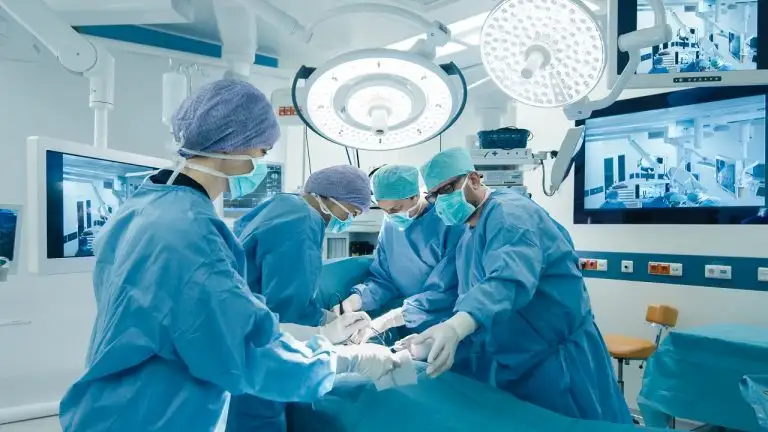
When all’s not well, surgeons often rely on voices in their head, where ideas and uplifting thoughts are sometimes replaced with self-questioning Wake up, Elizabeth, your operation is over; everything went off very well. Now, open your eyes,” I heard the anesthetist bellow as they went through the routine of reversing the anesthesia to awaken the patient and remove the breathing tube. It was an operation to clip an unruptured aneurysm arising from the bifurcation of the right internal carotid artery. I sat in one corner of the operating room writing down the post-op orders, feeling a kind of inner joy as I typed out my notes for having performed a masterful surgery. After I finished, I made a quick dash with my team to check on our admitted patients. When I returned to the ICU an hour later, I was informed that Elizabeth hadn’t been shifted yet. “That’s strange,” I said to myself, swiftly climbing the stairs that led to the operating room to hear four words from the anesthetist that no surgeon wants to ever hear: “She’s not waking up.” The anesthetist peered right into my eyes. “The muscle relaxant has been reversed, blood gas analysis is fine, but she’s just not opening her eyes,” she finished, looked at me with the finality of not having a plausible explanation for this from her end. This was also her polite way of saying, you’ve done something wrong inside, now fix it. I went through the steps of surgery in my mind, running my hands through my scanty hair. Could it be because we buzzed a surface vein? Have I taken a perforating artery supplying the hypothalamus in the clip? Did we retract the brain too much? Is the main artery kinked by the clip? The self-introspection then made way for chatter. Should I have operated on her in the first place? I should have just asked the interventional radiologist to coil the aneurysm. She’s a mother of two, have I destroyed her family? Do I really think I have the skill to do these complex cases? Who am I trying to impress? And at whose expense? Better do something before it’s too late. Or, is the damage already done? It’s a sickening feeling when someone you’ve operated on doesn’t wake up the way you expect them to. It is literally gut-wrenching; your intestines feel as though they are physically being squeezed. I looked at the numbers on the monitor and then at the anesthetist repeating the same words, over and over: “Wake up, Elizabeth, wake up—your surgery is over.” “Raise the blood pressure to 170-180,” I ordered, thinking that some crucial vessel might be in spasm. She transiently opened her eyes, but within a few seconds went back into a deep slumber. We got an urgent MRI done, but that was clean; no area of ischemia or infarction. No blood clots as well. The clip was positioned perfectly, and we ruled out her having subclinical seizures, too. We shifted her to the ICU on the breathing tube as my gaze vacillated between the monitor and her body lying motionless when it should have been sitting up in bed and talking to me instead. The chatter turned to a full-blown tirade. Am I missing something here? Should I call someone and ask for help? Should I just give this sometime? What would I do if someone else operated on this patient and I was called to opine on how to proceed? I use this last analogy a lot when I’m in distress. I try and distance myself from the problem at hand, and adopt the fly-on-the-wall approach. It’s easier said than done, of course, but all you have to do is zoom out. I remember reading somewhere, “The only people who see the whole picture, are the ones who step out of the frame.” There is a Chinese proverb that says, “He who blames others has a long way to go on his journey. He who blames himself is halfway there. He who blames no one has arrived.” I was halfway there. The countless permutations and combinations of the infinite possibilities of things that could have gone wrong kept buzzing in my head. We all have a voice in our heads. We tune into its incessant chatter to look for ideas, guidance, and wisdom. Sometimes, these conversations uplift us and sometimes they sink us into the deep, dark hole of despair. Ethan Kross, a renowned experimental psychologist, and neuroscientist, and one of the world’s leading experts on how to control the conscious mind, has written a book called Chatter: The Voice in Our Head, Why It Matters, and How to Harness. In that, he states, “In recent years, a robust body of new research has demonstrated that when we experience distress, engaging in introspection often does more harm than good. It undermines our performance at work, interferes with our ability to make good decisions, and negatively influences our relationships.” Instead, he reveals the tools you need, to harness that voice, so that you can be happier, healthier, and more productive. “Chatter doesn’t simply hurt people in an emotional sense, it has physical implications for our body as well, from the way we experience physical pain all the way down, to the way our genes operate in our cell,” he warns. I hadn’t read the book at the time, and my head was spinning with thoughts as I stood at the edge of her bed for three hours, waiting for her to move just a little. I was following the old age adage of “just give it time” when dealing with this unsettling experience. After a long, painful wait, Elizabeth moved a little. And then, a lot. She opened her eyes and made chewing movements and brought her arms to the tube as if to denote she wanted it out. We took it out once she was fully awake and briskly obeying commands, indicating to us that she was conscious,
A 10-Year-Old Boy with a Rare Zoonosis Disease Successfully Treated at Mira Road
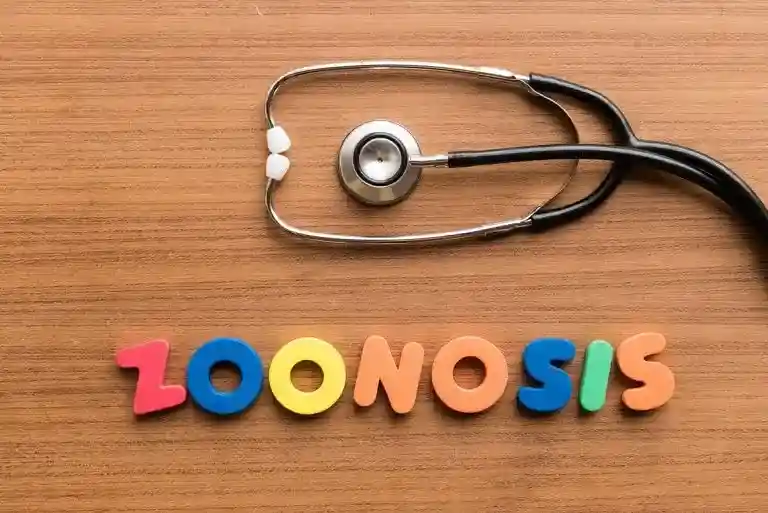
A team headed by Dr. Imran Shaikh successfully treated a 10-year-old boy having multiple cysts in his liver and lung due to zoonosis disease spread through animals. The patient underwent right liver resection with right lung lobectomy and has resumed online schooling. After 12 days of hospital stay, the patient is reunited with his family now. Ali Khan, a 10-year-old schoolboy from Uttar Pradesh’s was coughing for 9 months and couldn’t concentrate on his studies as the mucus would come out from the mouth. His family members were worried as he lost interest in his daily activities. The patient would avoid socializing as he was embarrassed and scared due to the constant coughing. He was unable to sleep or perform daily chores and his quality of life was compromised. He visited various medicos who diagnosed the condition as Tuberculosis (TB) and took treatment for 9 months. Even after taking medication, his condition didn’t improve and the patient came to Mumbai for further diagnosis at Wockhardt Hospitals in Mira Road. Dr. Imran Shaikh, consultant of Surgical Gastro, and GI Oncosurgery, Wockhardt Hospitals, Mira Road, said, “On arrival around a month back the patient had pain in the abdomen, coughing, and breathing difficulty. He was evaluated by performing sonography that indicated a large cystic lesion of big size approximately 14 cm x 12 cm in the liver compressing the pancreas and kidneys. His CT scan revealed a 15 cm in size lesion in the right lung that had a big cavity that was infected and about to rupture. The patient’s previous history and records were checked and it was concluded that the mucus he is coughing is due to the bacteria in the infected cavity misdiagnosed as TB. The cysts were formed due to zoonosis infectious disease that a human contract via domestic, agricultural, or wild animals” Zoonotic diseases are caused by harmful germs like viruses, bacteria, parasites, and fungi, and spread to humans through direct contact or through food, water, or the environment. Animals can appear healthy even when they are carrying germs that can make people sick. Children, older adults, one’s with weakened immune systems, and pregnant women will be at risk of this disease. Dr. Imran Shaikh said, “This patient was in direct contact with dogs and sheep in the village which are thought to be the sources of zoonosis. This infection travels to the intestine, liver and then lung wherein it completes its lifecycle, becomes adult and mature, and is known as Hydatid cyst. The Hydatid cyst becomes big in size and produces multiple daughter and granddaughter cysts. These cysts indicate that the organism is alive and it is reproducing. Sometimes, the organism creates a home and dies, or becomes small in size. In his case, the cysts were increasing in size and multiplying. When the cyst travels from the liver to the lung, it again goes into the blood and gets trapped, and develops another cyst. One can have multiple cysts in the body commonly in the lung and liver. In the lung, the cyst erodes the bronchus windpipe.” The patient was scheduled to undergo Right liver resection and right lung lower lobectomy. In this surgery, we cut around 40 percent of the liver and around 70 percent of the right lung., so as to cure the deadly infestation. The surgery lasted for 12 hours. The patient did not require any blood transfusions. The patient was discharged after 12 days. There are some chances of recurrences so after surgery patient has started on medicines which he has to continue for 3 months. The patient also advised avoiding contact with domestic animals. Not treating him could have been disastrous as this disease keep multiplying and damage the liver, lung, and sometimes even future leading to death. After 3 months of treatment, He will be asked to come for follow-up on a yearly basis wherein a CT scan will be done for 5 years to check the status of the disease. Hydatid cyst is a rare disease and affects people of lower socioeconomic strata. This disease is completely preventable as it gets transmitted from hands that are contaminated in the stool of domestic animals. Simple good hygiene and hand cleaning can prevent this. Also, this is completely curable if timely diagnosed. Sometimes the diagnosis can be a problem as it mimics other benign diseases of liver and lung, “said Dr. Imran Shaikh. “I was worried when my family used to inform me via video or phone calls that my son is coughing constantly. I was worried thinking it could be Covid or Bad TB. I was shocked and worried about him as he was in pain. Even after receiving treatment in the village, he didn’t get that much-needed relief. So, I asked them to travel to Wockhardt Hospitals as I reside at Mira Road. I thank the doctors for treating my child with this infection that we were unaware of. Now, my son is leading a normal life like other kids, his cough and abdominal pain have vanished,” concluded the patient’s father Mr. Khan. Tips to Prevent Zoonosis Disease • Wash your hands from time to time• Wash off all produce before eating it• Avoid being bitten or scratched by an animal• Get your pets vaccinated and take them for regular follow-ups to the veterinarian• Don’t eat, drink, or touch your eyes or mouth while you’re handling or in close contact with animals• Use gloves to handle an animal that is or appears to be sick• Clean the area where animals are kept Source: http://businessnewsthisweek.com/health/a-10-year-old-boy-with-a-rare-zoonosis-disease-successfully-treated-at-wockhardt-hospitals-mira-road/
World No Tobacco Day 2024: (31st May)
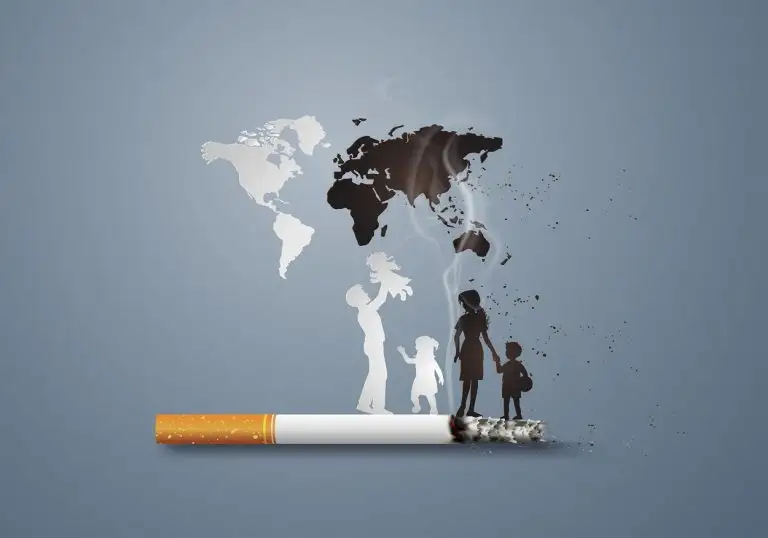
World No Tobacco Day, which is observed on May 31 every year, Tedros Adhanom Ghebreyesus, WHO Director-General said that smokers have up to a 50 percent higher risk of developing severe disease and death from COVID-19. According to experts, smoking impairs lung function, then reduces immunity, and makes it harder for the body to fight off various diseases. Health experts on Sunday warned that smoking tobacco can put you at high risk of COVID-19 by affecting your body’s immunity. So, if you are a smoker then it’s high time to crush and throw it away forever. According to experts, smoking impairs lung function, then reduces immunity, and makes it harder for the body to fight off various diseases. According to the Ministry of Health and Family Welfare, tobacco use is a major risk factor for the four main Non-communicable Diseases (NCDs) — cardiovascular disease, cancer, chronic lung disease, and diabetes. “Smoking doesn’t increase your chances of being infected by COVID-19 since the smokers are at an equal risk of contracting the infection as a non-smoking individual. However, long-term smokers suffer often from Chronic Obstructive Pulmonary Disorder (COPD) a condition that causes irreversible damage to the lungs. In such patients, COVID-19 may cause severe complications and minimize the chances of complete recovery due to the existing lung damage. International studies have shown that the Case Fatality Ratio (CFR) of COVID-19 almost triples in patients with COPD as compared to healthy individuals,” said Dr. Sudeep Sarkar, Senior Consultant, Oncosurgery (Head and Neck), Nanavati Max Super Speciality Hospital. Dr. Pritam Jain, Consultant Oncologist, Wockhardt Hospitals Mumbai Central explained: Smoking increases the risk of transmission and severity of covid 19 Smoking (cigarettes, waterpipes, bidis, cigars, heated tobacco products) causes the following: Source: https://www.healthwire.co/world-no-tobacco-day-2021-can-smoking-increase-your-risk-of-contracting-covid-19-heres-what-experts-say/
Constable Suffers Head Injury After Scooter Bangs into Him
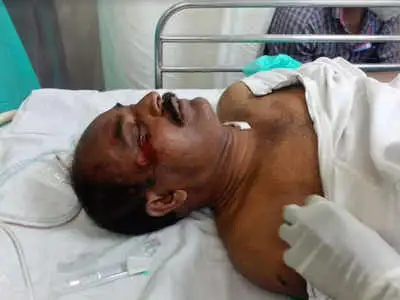
A police constable suffered a severe head injury and fracture on his left leg after a speeding scooter banged into him on the Western Express Highway (WEH) in Jogeshwari (East) while he was on nakabandi duty. The victim identified as Vitthal Gadekar is recuperating at Cooper hospital for the severe injuries he suffered on May 19. Jogeshwari Police arrested the scooterist identified as Saurabh Sawant (19) on Wednesday after he got discharged from the hospital after he was booked for an attempt to murder, rash driving, and causing grievous hurt charges. Gadekar’s condition is critical and is kept in the intensive care unit (ICU). The incident occurred on the southbound arm on the WEH, when Gadekar was on night nakabandi duty amid the weekend drive for the lockdown to take action on speeding vehicles. “At around 10.20 pm, Sawant, riding rashly rammed into Gadekar head-on. Gadekar, who sustained a leg injury in the accident, fell and hit his head. Others present at the spot rushed Gadekar to Cooper Hospital for treatment,” said a Jogeshwari police officer. Sawant too sustained injuries in the incident. He is also getting treated. “Sawant, an employee of the marketing company, was on way to his workplace and was driving at extreme speed. He said he could not recollect what went wrong and hit Gadekar. He underwent surgery on his fractured left leg. Later he was shifted to Wockhardt hospitals for the bleeding he suffered in his brain. While he is recuperating, doctors claim his condition is critical,” said the police. Sawant confessed to committing the offense. “Sawant was not found with any vehicle documents at the time of the accident. He is in police custody for five days,” said the police. Source: https://timesofindia.indiatimes.com/city/mumbai/mumbai-constable-suffers-head-injury-after-scooter-bangs-into-him/articleshow/82980596.cms
How much skincare is too much skincare

The beauty product industry is a 450 billion dollar industry. And with the spread and reach of digital media everywhere, this industry has taken the upward spiral owing to the increasing influence of social media trends, beauty bloggers, and Instagram influencers. Moreover, owing to the current pandemic situation, we are spending a lot more time at home and focusing on our skincare regime more than ever, and there’s a possibility that we are indulging in a lot more skin products than actually needed. What is the downside of using ‘too much’? Excessive use of serums containing retinol or AHA/ BHA products without a dermatologist’s advice can cause irritation, inflammation, redness, and even hyperpigmentation. A heavy moisturizer containing an oil base or heavy occlusive ingredients (like silicones or petrolatum) can cause blackheads, breakouts, and acne. Every individual’s skin is different and these products need to be tailored as per a person’s skin type, skin hydration, and current environmental condition. Not only is the application of unnecessary lotions and products time-consuming, but they can take up valuable bathroom space and cost a fair amount of money as well. So let’s have a look at what we actually must include in our day-to-day skincare regime. Everyone wants to improve their skin, wants a clearer and radiant complexion but rather than adding layer upon layer of new products, the best approach is to try and understand one’s own individual skin needs. Simplicity is the key to a good skincare routine. If you are adding new products, do it one product at a time so that this helps your skin get used to it and if you do have a reaction, also helps you work out which product you are sensitive to. All our skin needs is a cleanser, moisturizer, and sunscreen which suit your skin type. In special situations, we may add a fourth category as well – the active treatment. This is meant to target specific, individual concerns (pigmentation, acne, redness, etc). These four products can theoretically address all of your skin’s needs. Additionally, few add-ons may be used occasionally such as micellar water to take off makeup, or a weekly exfoliator or a mask.






